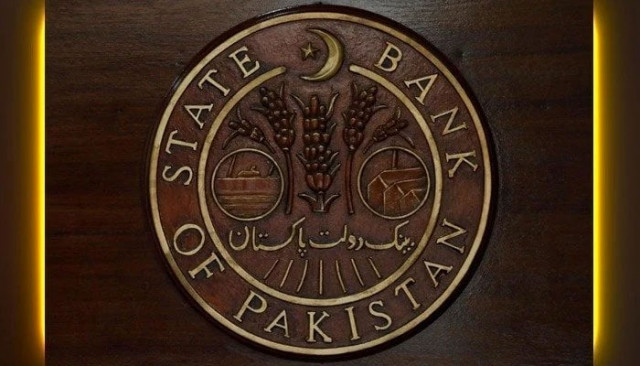Post-monetary policy blues
If markets don’t follow SBP’s signals, then impact of monetary policy will be diluted

The State Bank of Pakistan (SBP) announced its decision to keep the policy rate stable at 9.75% in the previous week.
The market had mixed expectations on whether there would be a hike or not. Given that inflationary and external account pressures stem mainly from supply side issues, it was not hard for the central bank to justify such a stance. After all, higher interest rates cannot reduce the price of petrol or tomatoes and in fact may raise the dreaded spectre of stagflation.
More interesting was the reaction we saw from the markets and treasury bill auction after the announcement. Yields up to 3 months in tenor saw a decline of 10-15 bps while longer tenors jumped by 10-25 bps.
This in itself was unusual as it indicated bond traders were not taking the SBP’s status quo decision seriously (more on that later). In the subsequent auction, where the government was looking to raise Rs1 trillion, the bidding came in at significantly higher levels.
In years past we might have expected the auction to be scrapped, but with the SBP lending restricted, the government had no choice but to accept the bids. As a result, the cut-off yields jumped by a massive 1% to 1.3%.
While accepting that the SBP has operated in an extremely difficult environment over the last two years, its recent communications have come under fire, to the extent that it had to publicly respond to what it called unfair criticism.
The latest monetary policy statement (MPS) will provide commentators with more fodder in this regard.
First the contradictions. The January MPS had taken comfort that “fiscal consolidation...has lowered the outlook for inflation in FY23”, however, the March MPS believes that “the outlook for inflation has improved following...the government’s relief package.”
In January, the SBP welcomed fiscal measures to moderate demand but in March it is praising a subsidy for petrol and electricity consumption.
Secondly, in the January MPS they had highlighted that “the momentum in inflation has slowed with month-on-month (MoM) inflation flat in December”, however, in the March MPS they chose to state “headline inflation moderated in February to 12.2% (YoY).”
The December MoM number of -0.01% was seasonal and in fact higher than the long-term average of -0.6%, while the February MoM number (which was not quoted in the March MPS) was 1.2% against the long-term average of 0.1%.
Using selective metrics (month-on-month vs year-on-year) to prove inflation is easing, is problematic.
Then there is the positive spin on external numbers. The one that has been talked about most is the non-oil current account deficit (CAD). Analysts have found this new measure perplexing as most of Pakistan’s macroeconomic crises have stemmed from rising energy prices.
Secondly, the SBP took confidence from the fact that “despite the rise in global prices, the February trade deficit witnessed a further 10% contraction (MoM).” The spike in commodity prices would not reflect in February anyway as most movements are passed through with a lag of approximately one to two months due to the gap between contract execution and delivery.
The central bank also brushed aside the decline in remittances, noting that “remittances fell marginally in January, partly reflecting seasonality, but have grown in line with expectations so far this fiscal year.” A 15% MoM decline is not marginal and in the context of our monthly deficit, a near $400 million drop in remittance flows is concerning. And here again we have the cherry-picking of data where MoM data for trade deficit is used while remittances are measured on a fiscal year-to-date basis.
Now, the icing on the cake. “Since the Russia-Ukraine situation remains fluid, the MPC noted that it was prepared to meet earlier than the next scheduled MPC meeting in late April, if necessary, to take any needed timely and calibrated action to safeguard external and price stability.”
After all the attempts to paint a rosy picture of economic developments, the central bank left itself an exit route. This guidance was perhaps why we saw such aggressive bidding in the T-bill auction as market participants are now expecting a rate hike before the next policy, which is scheduled for April 20, 2022.
The point of forward guidance is to lend credibility to the central bank’s monetary stance rather than making its policy rate irrelevant. It should not be surprising if market yields and Kibor rise despite the status quo decision.
The central bank has the unenviable job of balancing the competing policy objectives in a highly uncertain environment. It has taken many excellent initiatives over the past three years for which it must be lauded. Unfortunately, its current communication strategy does not seem to be having the desired effect. If markets do not follow its signalling, then the impact of monetary policy will be diluted and the SBP will be left following the market rather than leading it.
The writer is an economist and portfolio manager who has been working in Pakistan’s capital markets for over a decade
Published in The Express Tribune, March 14th, 2022.
Like Business on Facebook, follow @TribuneBiz on Twitter to stay informed and join in the conversation.


















COMMENTS
Comments are moderated and generally will be posted if they are on-topic and not abusive.
For more information, please see our Comments FAQ